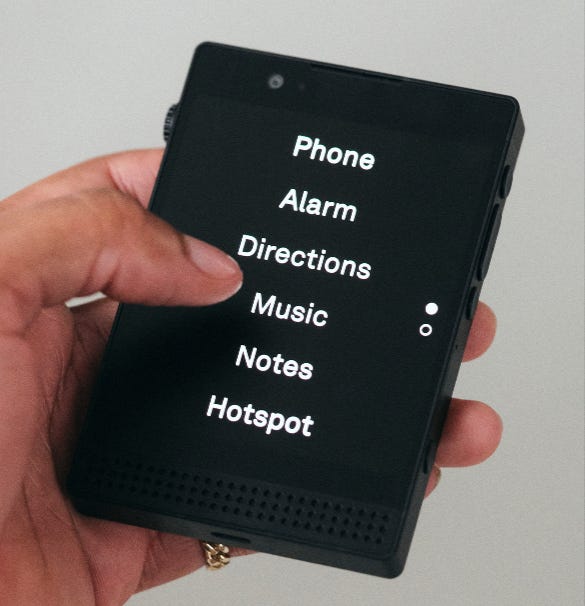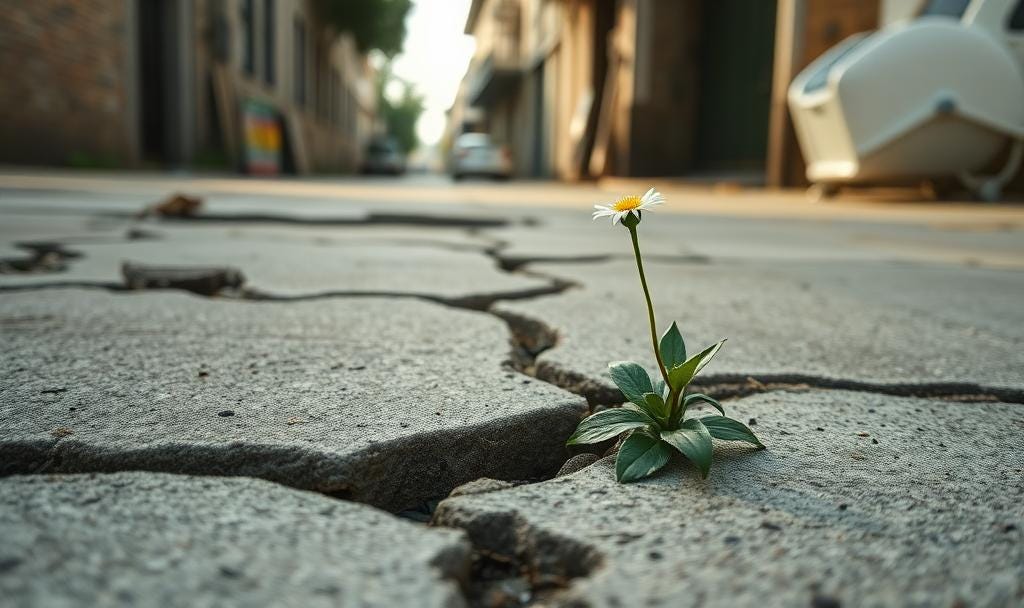The Degrowth Designer
#013: What happens when we design not for growth, but for enough?
Welcome to issue #013 of the Systems & Signals. Unlike Tuesday’s more tactical design topics, Thursday issues zoom out by exploring systems-level questions, wicked problems, and the broader social, ethical, and economic contexts shaping our work. This week: what happens when we stop designing for growth?
Most digital products are built on the premise of growth: more users, more sessions, more time and money spent. Growth is so deeply baked into our metrics, methods, and mindsets that we rarely question it. In fact, most product and design teams are directly incentivized to chase it even when the product’s impact on people or the planet is questionable at best.
But what if we started designing against growth?
Not out of cynicism or defeat, but out of care. What if “more” was no longer the goal and instead, we optimized for “enough”?
Degrowth thinking doesn’t mean burning down the business model. It means building new models where thriving doesn’t depend on exploitation, addiction, or obsolescence. And in a world increasingly aware of the costs of unchecked growth, that mindset is an asset.
This is the design challenge at the heart of the degrowth movement: how do we build digital experiences that help people live well without fueling endless extraction?
Growth is Not Neutral
It’s easy to see growth as a neutral goal, but the design choices we make to drive it — infinite scroll, auto play, dark patterns, pushy personalization — reveal otherwise.
These patterns aren’t accidental; they’re engineered to maximize attention, time, and conversion and make sense in a system where engagement equals profit. But they often come at a cost:
Environmental: More server time, more devices, more data centers.
Social: More anxiety, distraction, polarization.
Economic: More pressure to monetize, scale, and extract, even from users who may not benefit.
In other words, the dominant design playbook is deeply entangled with the logic of capitalism — and specifically with its need for perpetual economic growth at almost any cost.
“Degrowth? In This Economy?”
Let’s be honest: If you pitched degrowth to most CEOs, you’d be met with a raised eyebrow or laughed out of the room. Growth is their mandate and shareholder value is the scoreboard. So why would any business leader entertain a degrowth-aligned design strategy?
A few reasons:
Risk mitigation. Some of the fastest-growing companies are now facing existential pushback from regulators, disillusioned users, or the burned-out employees trying to keep up. A degrowth lens can surface long-term risks disguised as short-term wins.
Market saturation. In mature markets, endless user acquisition is no longer viable. Companies like Apple, Patagonia, and IKEA have all explored post-growth strategies — from repair programs to service models — as growth slows. Designers can lead in this shift.
Brand differentiation. In a landscape full of addictive, extractive, or surveillance-driven tech, designing less can be a selling point. Products that respect time, attention, and autonomy stand out. Consider Arc browser or Light Phone — niche, yes, but culturally resonant.
Resilience and trust. Hypergrowth often leads to brittle systems, both technical and organizational. Designing for durability, clarity, and transparency builds long-term trust with users and that trust can become a strategic moat.
Regulatory tailwinds. Privacy laws, AI regulation, and sustainability mandates are on the rise. Design teams that think beyond growth-first metrics will be better positioned to adapt.

Degrowth thinking doesn’t mean burning down the business model. It means building new models where thriving doesn’t depend on exploitation, addiction, or obsolescence. And in a world increasingly aware of the costs of unchecked growth, that mindset is an asset.
What Would Degrowth UX Look Like?
Designing for degrowth doesn’t mean abandoning technology. It means reimagining it to serve different goals:
Sufficiency over scale. Designing features that help users meet real needs efficiently, not stay endlessly engaged.
Slower interaction models. Patterns that invite pause, reflection, or friction — like timed opt-ins instead of default permissions.
Local-first experiences. Prioritizing tools that work offline, support peer-to-peer sharing, or favor community ownership.
Longevity by design. Building tools meant to last, repair, or evolve gracefully rather than be replaced in 12 months.
Who’s Doing It?
Examples are rare and often exist outside of traditional VC-funded tech. But they do exist:
The Buy Nothing Project fosters hyperlocal gift economies through community-driven platforms, with no advertising or monetization.
Fairphone designs smartphones to be easily repairable, with modular parts and long-term software support.
Local-first software projects like Ink & Switch explore new paradigms for private, peer-powered collaboration.
These aren’t just cute edge cases, they’re critical experiments in designing differently.
Designing for degrowth isn’t about going backward. It’s about forward-thinking restraint — building systems that recognize ecological limits, social fatigue, and ethical complexity. It’s about knowing when not to design.
Degrowth as a Design Prompt
It’s easy to treat degrowth as an economic abstraction. But designers are uniquely positioned to make it tangible by translating values into artifacts, flows, and interactions.
Degrowth as a design prompt invites us to ask hard questions:
What’s the smallest, simplest thing we could build that helps people thrive?
How might this feature reinforce extractive behavior — and how could we redesign it?
Could we optimize for clarity and trust instead of conversion and stickiness?
What does it mean to create a delightful experience that ends rather than loops?
These questions don’t have easy or definitive answers. But wrestling with them can lead to a more honest, humane design practice.
Final Thought
Designing for degrowth isn’t about going backward. It’s about forward-thinking restraint — building systems that recognize ecological limits, social fatigue, and ethical complexity. It’s about knowing when not to design.
The design industry loves to talk about “changing the world.” Maybe the most radical change we can make isn’t to scale faster, but to stop, reflect, and ask: who benefits from this product, and at what cost?
In a world hooked on growth, enough is a design revolution.
Further Reading:



